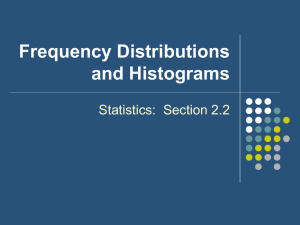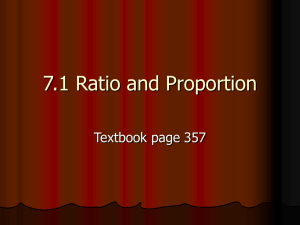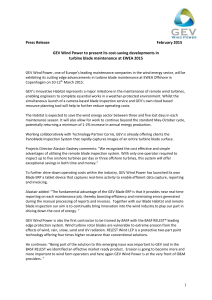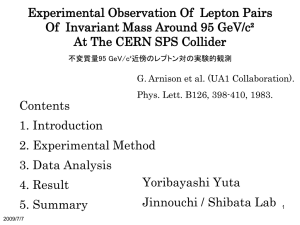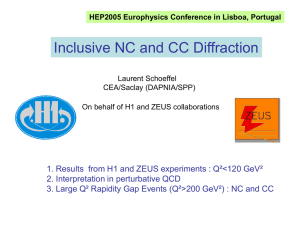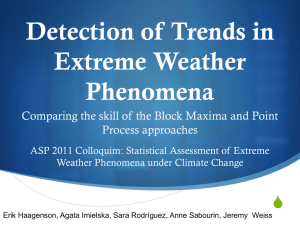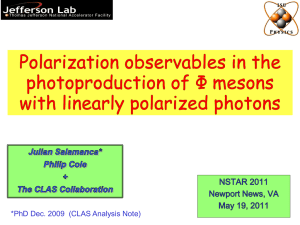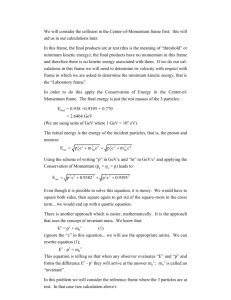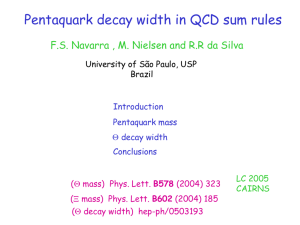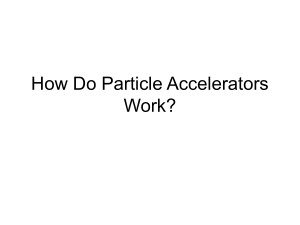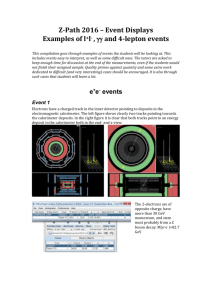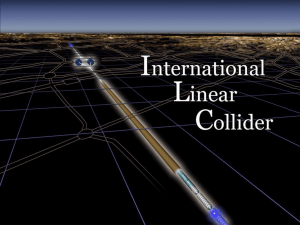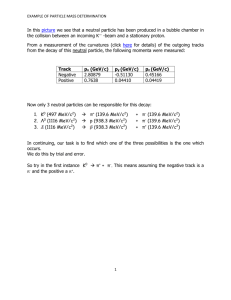B-physics hadronic
advertisement
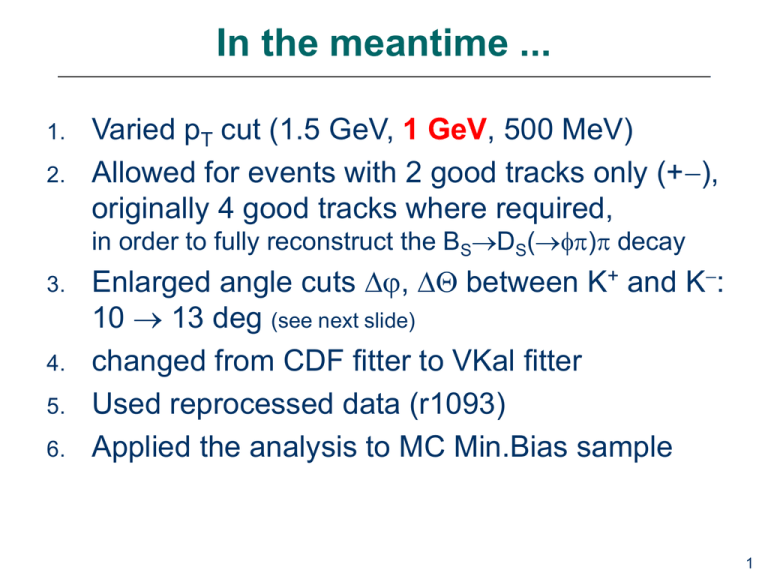
In the meantime ... 1. 2. Varied pT cut (1.5 GeV, 1 GeV, 500 MeV) Allowed for events with 2 good tracks only (+), originally 4 good tracks where required, in order to fully reconstruct the BSDS() decay 3. 4. 5. 6. Enlarged angle cuts , between K+ and K: 10 13 deg (see next slide) changed from CDF fitter to VKal fitter Used reprocessed data (r1093) Applied the analysis to MC Min.Bias sample 1 What we presently do/plan to do Do background subtraction by using same sign combinations of tracks. Find more appropriate function for describing the background shape (polynomial has stability problems with low statistics). The fitting function for signal should better be a BreitWigner accounting for phase space convoluted with a Gaussian to represent the detector resolution. Go down only to pT > 0.8 GeV, and build a phi peak again (still no dE/dx). Make a mass plot of () candidates, that build a 3-prong vertex, look at the DS meson mass region (putting both + and candidates into one plot). 2 Width of the (1020) in MC truth Fitting the Monte Carlo truth signal with a Breit-Wigner (relativistic and non-relativistic) gives m = 1019.38 0.004 GeV and = 4.45 0.01 GeV, which is larger than the current PDG value investigations PDG 1990 1998 2006-9 Pythia_6.42 (current version) width [GeV] 4.41 4.43 4.26 mass [GeV] 4.43 1019.4 PMAS(KC,2) PMAS(KC,1) 1019.46 Conclusion: (1020) in ATLAS Monte Carlo productions not generated with the current PDG value for the width! 3 Fit 4 Fitting the (1020) signal Using a convolution of a Breit-Wigner with a Gaussian (and a threshold function for the bg) inside the RooFit framework has already implemented this convolution: “Voigtian“ – fix width of Breit-Wigner ( = 4.26 GeV) RooVoigtian signal("signal","Voigtian PDF",x,mean,width,sigma); width.setVal(4.26); width.setConstant(kTRUE); RooGenericPdf bg("bg","background","(x-987.35)^p*exp(-b*(x-987.35))",RooArgSet(x,p,d)); RooAddPdf model("model","sum of signal and bg",RooArgList(signal,bg),RooArgList(Nsig,Nbkg)); model.fitTo(data); // Extended Maximum Likelihood Fit (unbinned) width.Print(); 5 Comparision with the old method Gauss with first plot shown (pT > 1.5 GeV) N = 60.7 15 = 2.93 0.74 One gets 30% more events (due to tails of Breit-Wigner). N = 58 16 = 2.88 0.76 Gauss N = 76 19 Gauss = 1.8 1.0 Voigt 6






